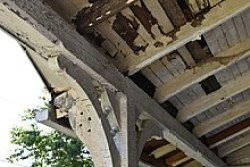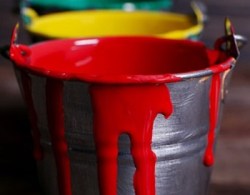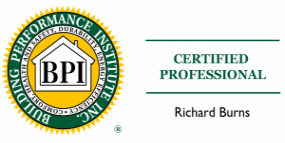Lead-based paints were used in many homes prior to its banning by the federal government in 1978. As the name implies, lead-based paints contain lead. Lead is added to paint to accelerate drying, increase durability, maintain a fresh appearance and resist moisture that causes corrosion.
Exposure

Lead-based paints in good condition pose little risk but those that begin to peel, chip, chalk, or crack do pose a health risk. Many documented cases of lead poisoning can be attributed to lead contamination resulting from the degradation of such paints.As lead-based paint products degrade lead can be released into the surrounding environment in the form of dust. Lead dust can also be formed and become airborne when lead-based paint is sanded or scrapped or when rubbed together, painted surfaces can also produce lead dust. The lead dust can settle and then become airborne again when disturbed by sweeping, vacuuming, or just walking through a contaminated area. Chips of paint flaking off of exterior surfaces can even cause ground contamination.
Health Risks
Lead poisoning can occur when lead is inhaled or ingested. The concentration of lead in the body will grow over time with continued exposure. Physical symptoms of lead poisoning in children can include: damage to the brain and nervous system, behavior and learning problems, slowed physical development, hearing problems, and chronic headaches. Adults are also affected and can have: difficulties during pregnancy, reproductive problems, high blood pressure, digestive problems, nerve disorders, memory and concentration problems, muscle and joint pain.
Dealing with Lead-Based paints in your home
It is sometimes better to just assume that if your home was built prior to 1978 that it contains lead-based paints.

- Wipe down flat surfaces, like window sills, with a damp paper towel and throw away the paper towel
- Mop smooth floors (using a damp mop) weekly to control dust
- Take off shoes when entering the house
- Vacuum carpets and upholstery to remove dust. If possible, use a vacuum with a HEPA filter or a “higher efficiency” collection bag.
- Pick up loose paint chips carefully with a paper towel and discard in the trash, then wipe the surface clean with a wet paper towel
- Take precautions to avoid creating lead dust when remodeling, renovating or maintaining your home
- Test for lead hazards by a lead professional, including the soil around your home
The US Housing and Urban Development Department (HUD) offers information on
how to Protect your family from Lead in your home.




